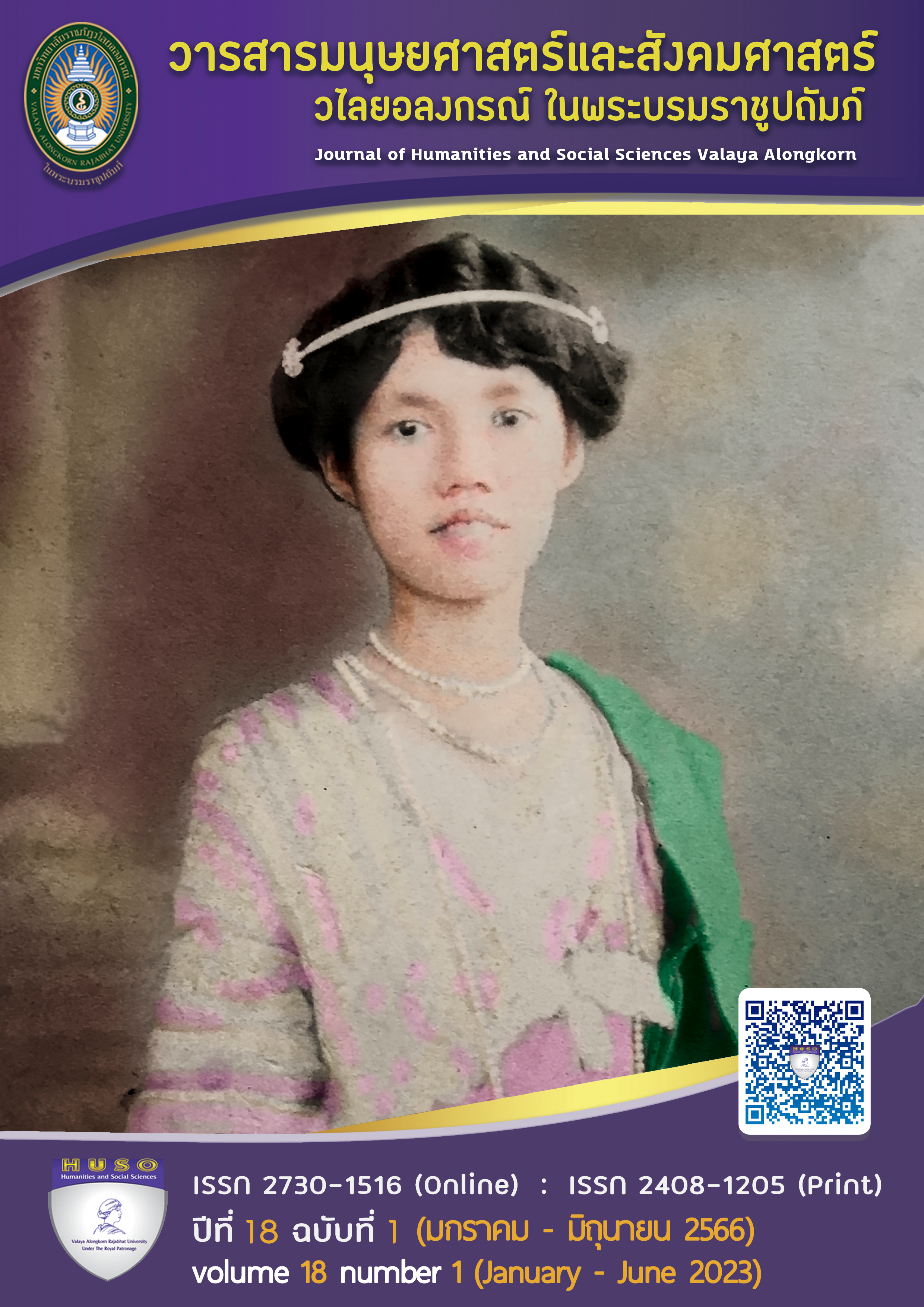A COMPARISON OF COMPOUND WORDS IN NORTHERN THAI DIALECT AND LAO LANGUAGE
Main Article Content
Abstract
This research aimed to analyze and compare the Northern Thai dialect compound words and the Lao language in 4 aspects: 1) the number of compound words, 2) similarities and differences of the meanings, 3) factors in creating compound words, and 4) determination of the meaning of compound words which from Lanna-Thai dictionary, Mae Fah Luang version (Rungruangsri, U., 2004) and Lao Dictionary (Onmaneesorn, T., 2008)
The research results indicated that there were 11,010 words of the Northern Thai dialect compound words (80.52%). There were 2,663 words of the Lao compound words (19.48%). In terms of the meanings of compound words in the Northern Thai dialects and the Lao language, it indicated that there were 358 compound words with similar meanings (87.96%) and 49 compound words with different meanings (12.04%). Thus, the number of compound words with similar meanings outpaced the number of compound words with different meanings was 309 words (75.92%). There were the most two common factors in creating compound words in both the Northern Thai dialect compound words and the Lao language. First, it was the livelihood factor (Northern Thai dialects were 56.51% and the Lao Language was 58.84%). The others were the nature and environment factor (Northern Thai dialects were 56.51% and the Lao Language was 18.93%).
In conclusion, the findings indicated that although the Northern Thai dialects contained more compound words than the Lao Language, the application of meaning and other factors were similar.
Article Details

This work is licensed under a Creative Commons Attribution-NonCommercial-NoDerivatives 4.0 International License.
ลิขสิทธิ์บทความวิจัยที่ได้รับการตีพิมพ์เผยแพร่ในวารสารมนุษยศาสตร์และสังคมศาสตร์ วไลยอลงกรณ์ ในพระบรมราชูปถัมภ์ ถือเป็นกรรมสิทธิ์ของคณะมนุษยศาสตร์และสังคมศาสตร์ มหาวิทยาลัยราชภัฏวไลยอลงกรณ์ ในพระบรมราชูปถัมภ์ ห้ามนำข้อความทั้งหมดหรือบางส่วนไปพิมพ์ซ้ำ เว้นแต่จะได้รับอนุญาตจากมหาวิทยาลัยเป็นลายลักษณ์อักษร
ความรับผิดชอบ เนื้อหาต้นฉบับที่ปรากฏในวารสารมนุษยศาสตร์และสังคมศาสตร์ วไลยอลงกรณ์ ในพระบรมราชูปถัมภ์ เป็นความรับผิดชอบของผู้นิพนธ์บทความหรือผู้เขียนเอง ทั้งนี้ไม่รวมความผิดพลาดอันเกิดจากเทคนิคการพิมพ์
References
กรรณิการ์ วิมลเกษม. (2555). ภาษาไทยถิ่นเหนือ (พิมพ์ครั้งที่ 3). เชนปริ้นติ้ง.
กันยารัตน์ อุ่นทานนท์ และรัตนา จันทร์เทาว์. (2560). คำยืมภาษาอังกฤษในภาษาลาว. วารสารมนุษยศาสตร์
สังคมศาสตร์, 34(3), 82-99.
ดียู ศรีนราวัฒน์ และชลธิชา บำรุงรักษ์. (2558). ภาษาและภาษาศาสตร์ (พิมพ์ครั้งที่ 2).
มหาวิทยาลัยธรรมศาสตร์.
ทองคำ อ่อนมะนีสอน. (2551). วัดจะนานุกม พาสาลาว. หอสมุดแห่งชาติ.
เนตญา บุญอ่อน. (2560). คำนามประสมภาษาลาว. [วิทยานิพนธ์ปริญญามหาบัณฑิตไม่ได้ตีพิมพ์],
มหาวิทยาลัยศิลปากร.
บุญช่วย ศรีสวัสดิ์. (2547). ไทยสิบสองปันนา เล่ม 1. ศยาม.
ประคอง นิมมานเหมินท์. (2547). มองภาษา. แม่คำผาง.
เรืองเดช ปันเขื่อนขัติย์. (2552). ภาษาศาสตร์ภาษาไทย. Fast Books.
ลาวัณย์ สังขพันธานนท์. (2551). ภาษาลาวในชีวิตประจำวัน (พิมพ์ครั้งที่ 2). มหาวิทยาลัยมหาสารคาม.
วรรณสิริ สร้างเอี่ยม. (2553). เปรียบเทียบคำประสมในภาษาไทยและภาษาลาว. [วิทยานิพนธ์ปริญญามหาบัณฑิต
ไม่ได้ตีพิมพ์], มหาวิทยาลัยมหาสารคาม.
วริษา โอสถานนท์. (2559). ฝึกทักษะภาษาลาวเวียงจันทน์. จุฬาลงกรณ์มหาวิทยาลัย.
วิเชียร อำพนรักษ์. (2556). สนุกกับภาษาลาว ญาติสนิทภาษาไทย. สถาพรบุ๊ค.
วิไลศักดิ์ กิ่งคำ. (2544). ภาษาไทยถิ่น. มหาวิทยาลัยเกษตรศาสตร์.
วิถี พานิชพันธ์. (2548). วิถีล้านนา. โอ.เอส.พริ้นติ้งเฮ้าส์.
อัญชลี สิงห์น้อย. (2548). คำนามประสม ศาสตร์และศิลป์ในการสร้างคำไทย. จุฬาลงกรณ์มหาวิทยาลัย.
อุดม รุ่งเรืองศรี. (2547). พจนานุกรมล้านนา-ไทย ฉบับแม่ฟ้าหลวง. มิ่งเมือง.


